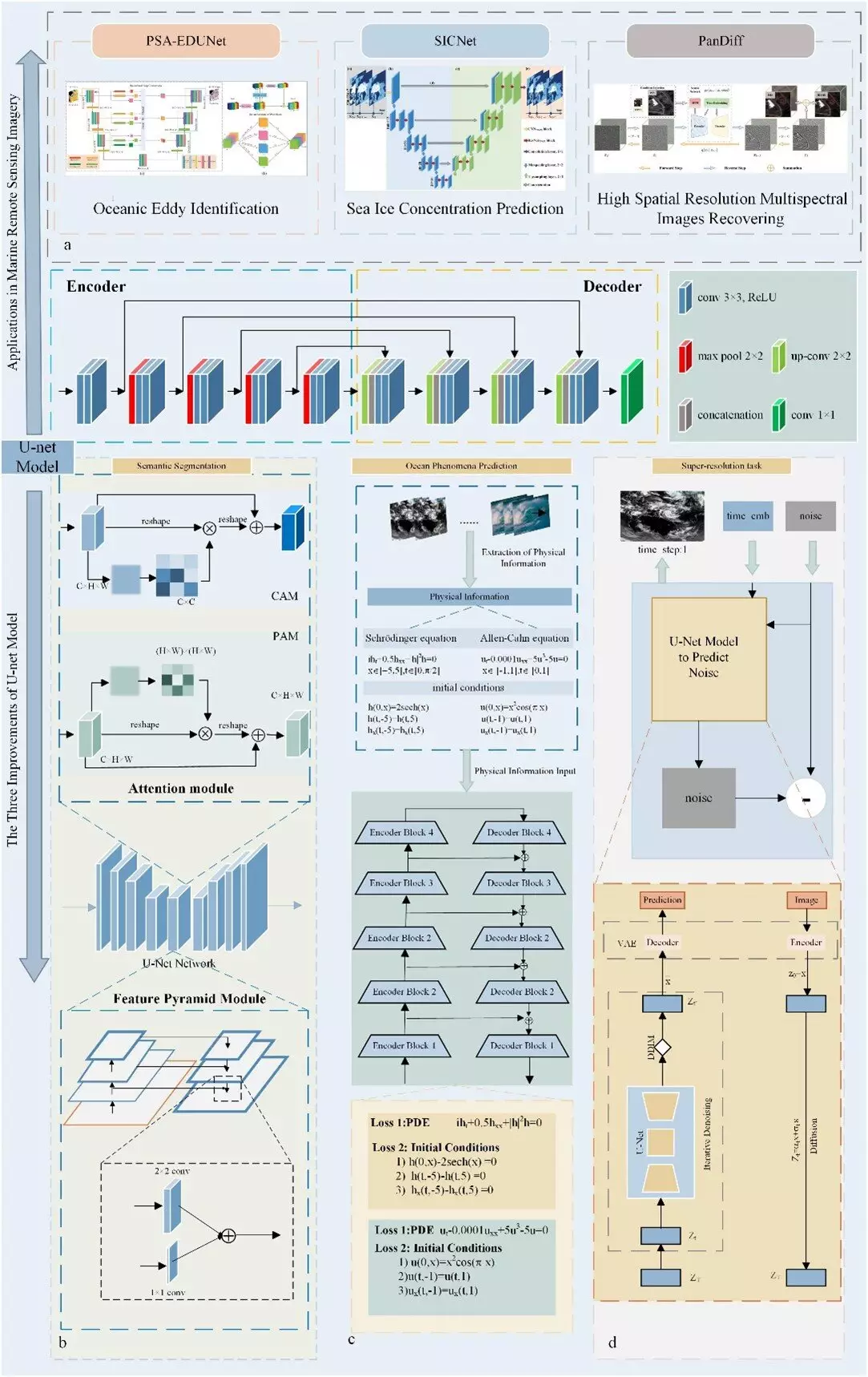In the quest to leverage advanced technologies for environmental monitoring, U-Net, a convolutional neural network originally designed for medical imaging, stands out as a promising candidate for ocean remote sensing applications. Traditionally utilized to delineate and extract objects within medical images, U-Net’s architecture has the potential to address critical challenges in oceanographic research. However, before it can fully embrace its role in this domain, several essential modifications must be implemented to enhance its efficacy.
The Limitations of U-Net in its Current Form
Despite its potential, U-Net is not without limitations when applied to ocean remote sensing. Researchers have identified notable deficiencies that hinder the model’s performance, especially with the intricate tasks that this field demands. A pivotal study published in the Journal of Remote Sensing in August 2024 highlights these shortcomings, emphasizing that improved segmentation tasks, forecasting capabilities, and image super-resolution techniques are crucial for maximizing U-Net’s effectiveness in oceanographic contexts.
Current challenges primarily revolve around U-Net’s segmentation tasks, which involve the categorization of each pixel in a given image. The model’s existing framework struggles to accurately distinguish between subtle variations in marine environments, such as open water and various types of marine ice. Moreover, the lack of robust forecasting capabilities within U-Net further dissuades its application in real-time ocean monitoring where accurate predictions are vital.
To address the segmentation challenges, one promising pathway is the incorporation of attention mechanisms that can enhance the model’s ability to recognize distant objects in imagery. By allowing U-Net to concentrate on specific regions of an image, researchers can significantly improve its accuracy in detecting small targets in challenging conditions, such as discerning the nuances between different ice formations and surface water. This capability is not merely an upgrade; it is an essential enhancement that could transform the application of U-Net in the ocean remote sensing landscape.
Moreover, enhancing segmentation tasks involves optimizing the model’s ability to analyze context and spatial relationships among various pixels. Such improvements can elevate U-Net’s performance, enabling it to achieve a nuanced understanding of complex oceanic patterns vital for ecological studies.
Advancing Forecasting Capabilities
Forecasting is another pivotal aspect where U-Net requires substantial amelioration. The model’s predictive abilities rely on its capacity to integrate historical data and discern patterns that inform future outcomes. Previous implementations of U-Net, such as the Sea Ice Prediction Network (SIPNet), have demonstrated how different architectures combined with temporal-spatial attention can yield impressive results. SIPNet’s integration of an encoder-decoder framework allowed for the prediction of sea ice concentration, showcasing the potential accuracy U-Net can achieve when optimized correctly.
The enhancement of forecasting tasks will involve not just the application of complex neural network architectures, but also the assimilation of multifaceted data sources. By leveraging machine learning to interpret complex datasets and historical temporal trends, researchers can facilitate more reliable predictions of marine conditions that are crucial for navigation, climate modeling, and resource management.
Improving Super-resolution Techniques
Super-resolution imaging represents another significant challenge and opportunity within the U-Net model’s framework. Current applications often suffer from image blurriness and noise, which compromise the quality of visual data essential for marine analysis. To remedy these shortcomings, researchers propose the integration of diffusion models that effectively minimize noise and enhance image fidelity.
The process involves recognizing similarities between high-resolution panchromatic images and low-resolution multispectral images. This will facilitate U-Net’s ability to reconstruct clearer and more accurate images, thus improving the overall quality of analysis in marine environments. By adopting advanced models, such as PanDiff, researchers hope to refine U-Net’s capabilities in synthesizing data from varying resolutions, striving for a seamless integration of fragmented visual data.
It is clear that while U-Net has significant potential for application in ocean remote sensing, its effectiveness hinges on targeted improvements. The journey toward optimizing this model for marine research entails collaborative efforts among scientists, engineers, and domain experts to explore innovative techniques and blend U-Net with other existing systems to extend its application.
U-Net’s architecture is well-positioned to contribute meaningfully to oceanic research; however, addressing its current limitations through structural enhancements and updates in methodologies will be essential. With concerted effort, U-Net can emerge not just as a biomedical tool, but as a pivotal asset in safeguarding our oceans and advancing understanding in ocean science.

